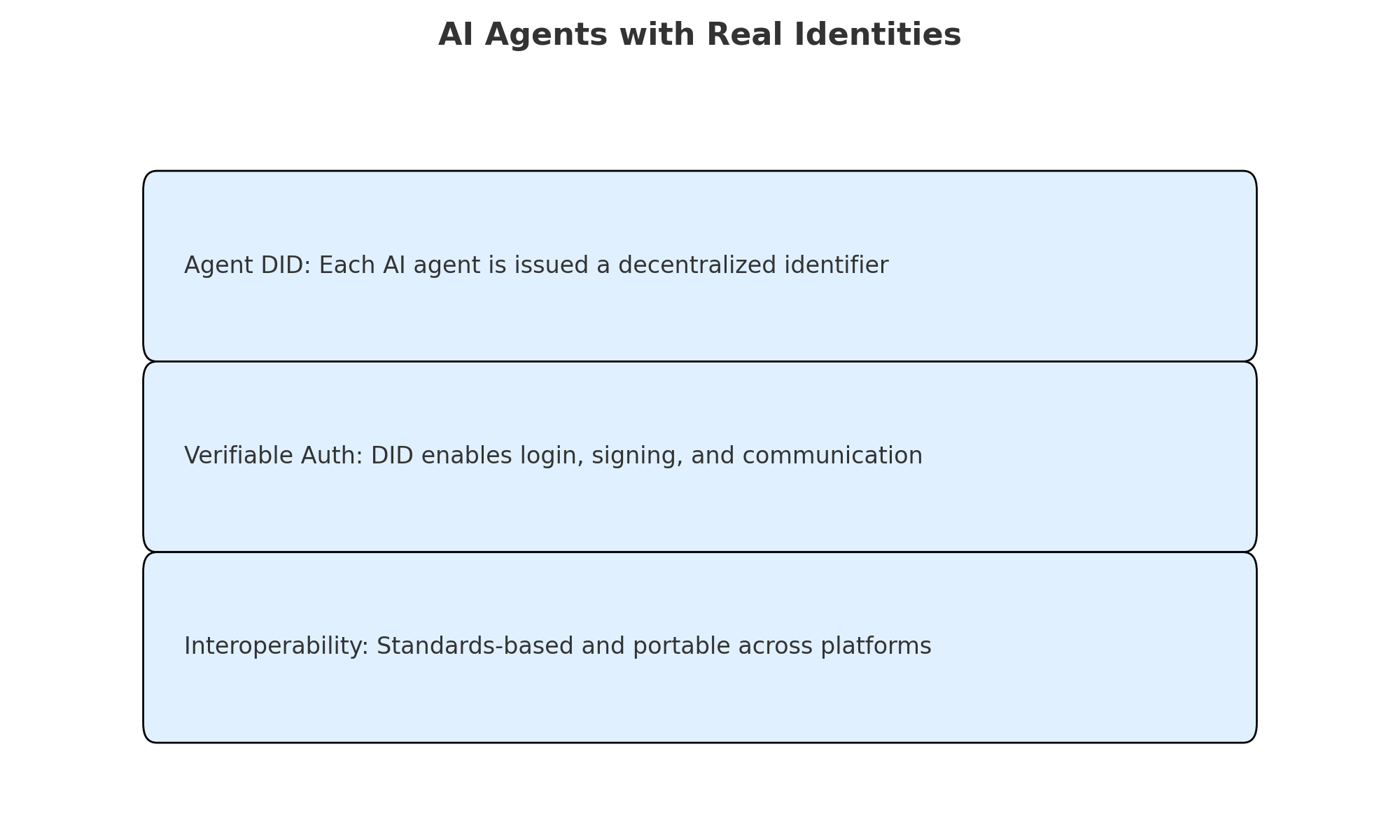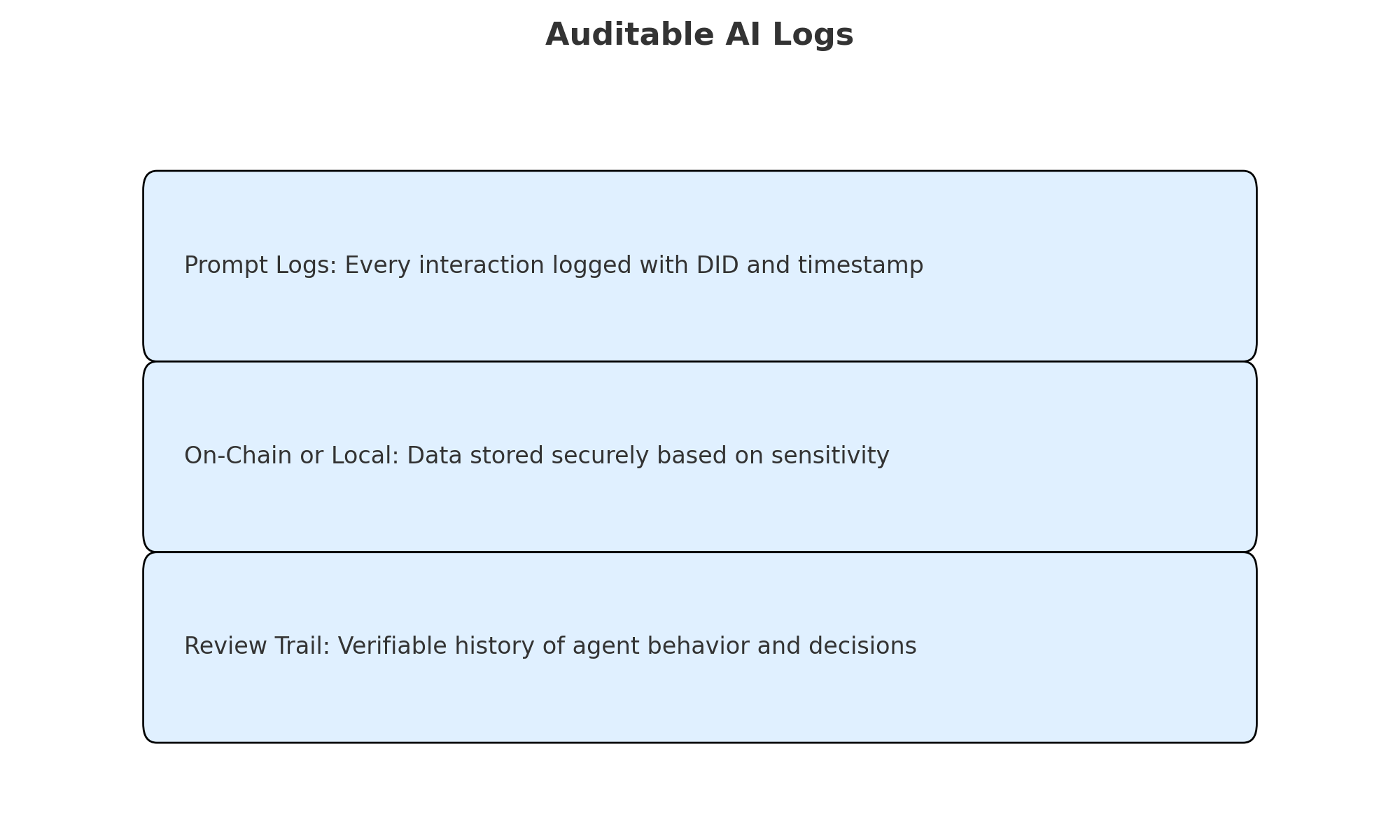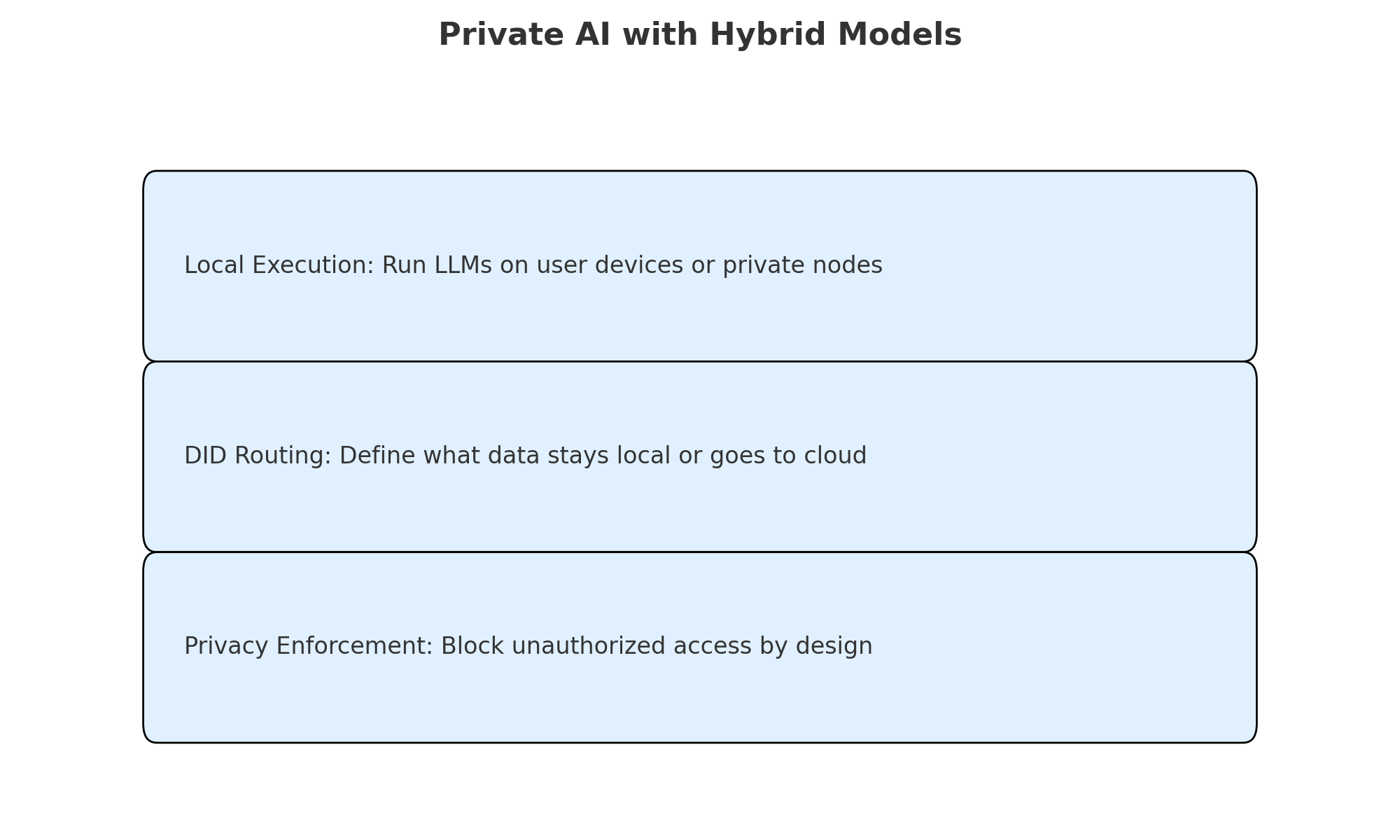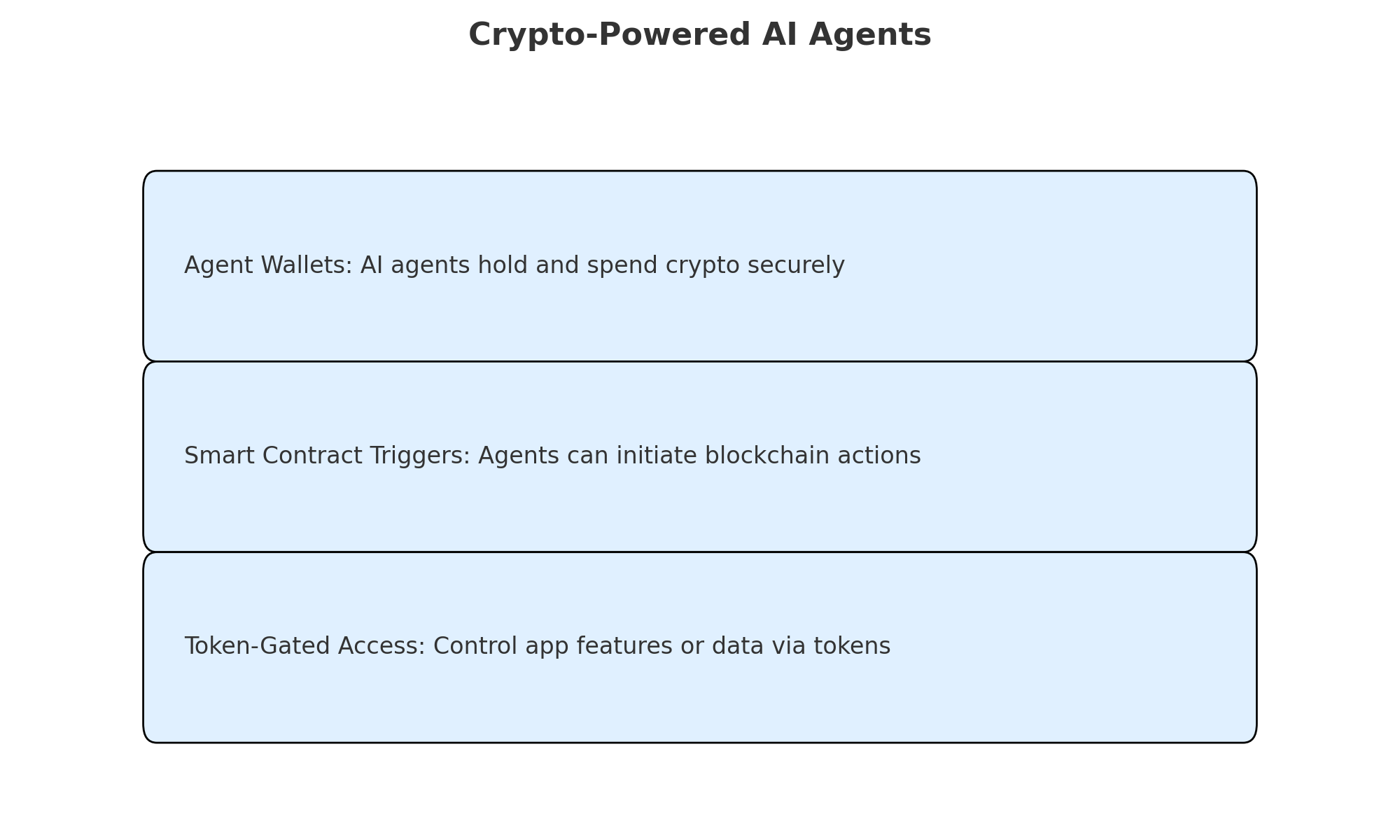It’s no longer enough for AI to talk back. Just a few months ago, ArcBlock CEO Robert Mao emphasized that 2025 will be a breakout year, and AI will need to prove itself with identity, transparency, and secure interactions built-in. The urgency behind this is to ensure that agentic systems have built-in trust in how they operate, who they represent, and where their data goes.
Here’s why decentralized identity (DID) is no longer optional—and how ArcBlock is actively solving the problem.
1. AI Agents with Real Identities#
“Every AIGNE agent comes with a DID. That’s not a feature—it’s foundational.”
—Robert Mao, CEO of ArcBlock
What this means in practice:
- Every AI agent built with AIGNE is automatically issued a decentralized identifier (DID).
- These DIDs enable:
- Secure authentication into apps (login as agent)
- Verifiable communication (signed requests or messages)
- Interoperability across systems (W3C DID compliant)
Real-world usage:
- ArcBlock Hackathon with Decentralized Identity Foundation (DIF)
ArcBlock participated in the DIF Hackathon, where teams built DID-authenticated AI agents for use cases like secure email assistants, data query agents, and more, demonstrating how DID + AI is a real developer need, not theoretical fluff.

Hackathon Project Demos: ArcBlock + Decentralized Identity
Related: W3C DID Core Spec — ArcBlock supports this spec directly.
🧾 2. Auditable AI: Logs, Not Just Trust#
“You should be able to see what agent did what, when, and with what data.”
ArcBlock is embedding auditability by default into AI with AIGNE:
- Every prompt, response, and action taken by an agent can be recorded on-chain or locally, with logs tied to DIDs.
- This creates a verifiable history of agent behavior, especially valuable in enterprise, legal, or compliance-heavy environments.
Real-world example:
- Writing Improvement Agent
AIGNE users can spin up a writing agent that not only refines drafts but keeps track of how decisions were made—when tone was shifted, what references were used, etc. This is already being used in content today, including articles, reviews, and AI-assisted publishing across teams.

3. Private AI: Local Models + DID-Based Routing#
“AI needs to know what to send to the cloud—and what never should leave your machine.”
ArcBlock supports hybrid model execution:
- Lightweight LLMs (e.g., Llama, Mistral) can be run locally on devices like M-series Macs or private servers.
- DID Spaces act as access gateways, defining what personal or business data agents can access or share.
- Data is selectively routed: sensitive inputs stay local, non-sensitive prompts (e.g., for language translation or search) can use public LLMs.
Reference: This hybrid model strategy is echoed by industry leaders like Apple, Ollama, and PrivateGPT—but ArcBlock is bringing this into the no-code AI builder space, making it accessible to non-technical creators.

4. Crypto-Powered Agents: From Actions to Transactions#
“Agents should be able to pay, earn, and hold value. Without crypto, they’re just clever scripts.”
By design, ArcBlock’s infrastructure, including its Payment Kit blocklet, makes this real:
- AIGNE agents can interact with crypto payments.
- Users can define agent workflows that include:
- Automated invoice generation
- Token-gated access control
- On-chain voting or decision-making

Example Blocklets already in use:
- Token Interaction Blocklets – let agents initiate or respond to blockchain payments or asset actions.
- NFT Utility Blocklets – agents can verify or distribute NFTs tied to their app experience.
Notable: Many more scenarios can also be supported using ArcBlock’s MCP (Model Context Protocol)-enabled architecture, which acts like a USB-C for agent-to-agent or agent-to-chain interoperability.
Bottom Line: AI Without DID Is a Liability#
As AI becomes the backend of every user interface, trust, transparency, and control are no longer negotiable. Whether you’re building internal tools, public-facing agents, or Web3-native products, your users (and regulators) will demand answers:
- Who’s behind the AI?
- What did it do?
- Where did my data go?
- Can I revoke access or change permissions?
With ArcBlock, those answers are baked in. Try it yourself, visit https://www.arcblock.io.
